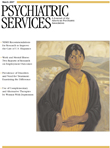Handbook of Psychopathy
The concept of psychopathy—defined by affective deficits, interpersonal glibness and superficiality, and poor behavioral controls—has improved our understanding of violent and aggressive behavior. Buttressed by a rich history, psychopathy has assumed a unique position within the field of mental health law. Considered to be the first personality disorder, psychopathy now has its own organization dedicated to its scientific study, a large number of journal issues and book chapters devoted to it, and an increasing number of students who are choosing to study psychopathy. Clearly, the field of psychopathy has a bright future.
Despite the aforementioned positives, the field of psychopathy is currently marred by substantial infighting and disagreements. This factionalization has undermined alliances and hindered scientific progress. Thus the Handbook of Psychopathy faces an uphill challenge of trying to integrate various aspects of a multifaceted disorder. Despite this formidable barrier, the book succeeds through presenting multiple perspectives on psychopathy and demonstrating their relevance to applied clinical issues. Moreover, the book sets the direction for psychopathy research and informs both researchers and clinicians how to best utilize existing knowledge.
The Handbook of Psychopathy brings several of the foremost researchers in the field together and presents state-of-the-art research. The book comprises 31 chapters, which are divided into six subsections: Theoretical and Empirical Foundations, Issues in Conceptualization and Assessment, Etiological Mechanisms, Psychopathy in Specific Subpopulations, Clinical and Applied Issues, and Conclusions and Future Directions.
Several aspects of the Handbook of Psychopathy set it apart from the many previous books on psychopathy. For instance, readers interested in the development of psychopathy will be pleased that nine chapters are devoted to etiological theories of psychopathy. These chapters cover a variety of etiological theories ranging from congenital—such as genetic and neuroanatomical—to acquired—such as family background and environment. A truly exceptional chapter in this section, authored by Paul Frick and Monica Marsee, outlines developmental pathways to antisocial behavior among youths, with a specific focus on callous-unemotional traits. This chapter summarizes much of the theoretical and applied research done by Dr. Frick and his colleagues for the greater part of the last decade and provides a nomological net for understanding the development of psychopathic traits.
A second concept that warrants discussion is that the book takes the treatment of psychopathy seriously. For years, psychopathic individuals were largely deemed untreatable. Even worse, some evidence suggested that treating psychopaths actually made them more likely to commit further antisocial acts. Going beyond these stereotypes, two chapters present empirical information related to the effective treatment of psychopathy. One chapter offers more optimism regarding psychopaths' potential for change than in previous writings. Likewise, the second chapter provides further optimism for treatment based on the notion that recent advances in neuroscience and neuroimaging may provide a template for future treatments.
A final thought for this review is to mention a theme that is represented throughout the book: integration. Support is evident for the notion that combining knowledge from multiple disciplines and theoretical perspectives provides the best opportunity for improved assessment and treatment. To that end, the Handbook of Psychopathy successfully integrates diverse theoretical viewpoints to advance the reader's understanding of psychopathy.
In conclusion, the Handbook of Psychopathy successfully transcends differences in the field and is replete with up-to-date information. The handbook is comprehensive, well written, and informative. I consider it a valuable resource for any young researcher or established scholar interested in improving his or her psychopathy knowledge base.



